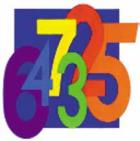|
|
Moderately Difficult Math Activities for Young Kids 1) Morning is a good time for children to learn that some things take longer than others. Use a timer or hourglass that is set to a given number of minutes and see if your children can get dressed in that amount of time. They can try to do other activities in that same amount of time. 1) Morning is a good time for children to learn that some things take longer than others. Use a timer or hourglass that is set to a given number of minutes and see if your children can get dressed in that amount of time. They can try to do other activities in that same amount of time.
2) Ask your children to estimate how many spoonfuls it will take to finish their cereal. Count each spoonful as they eat. This playful way of eating breakfast can be fun for toddlers to practice counting! If you repeat this activity over time, older children will get practice in predicting. 3) In the morning, read a thermometer or listen to the radio to hear the weather forecast. Then, ask your children what clothes they should wear that day. This will give meaning to the temperatures you just read or heard. You might even compare the temperature inside with the temperature outside. 4) Children learn that people communicate with symbols. Again, traffic signs are a good place to start. You might point out how the shape of the street sign helps people know what the sign means. Point out that the yellow triangle means let the other car go first, the red sign with so many sides (eight sides - octagon) means stop. The link between symbols and the concepts they represent is not always clear to children. Keep restating the meaning, but don't push. Children will make the connection when they are ready. 5) Think of a number between 1 and 10. Give your children clues like "bigger" or "smaller" and ask them to guess the number. Besides being a fun way to pass the journey, it will help your children develop a "mental number line" as they think about different numbers and how they relate to one another. 6) Play license plate games. Read aloud the numbers on license plates; find a license plate with the number two; or look for license plates with your child's age on them. Children can practice recognizing numbers or finding patterns. 7) Count the telephone poles as you pass them. This not only practices counting but also gives children a sense of rhythm and its relationship to time and space. 8) Show your children how to make a graph out of stickers so they can record when the stoplights are red or green. To start, take a piece of paper or cardboard and draw a line down the middle to make two columns - one with a red x on the top and the other with a green x on the top. Ask them to put a mark in the red column every time you stop at a red light and a mark in the green column when you go through a green light. Then ask them if there were more red than green, fewer red than green, or the same number of each. Children will learn a little about data recording and interpreting and see that numbers can tell them something about their own life.
| |||
| |
| | |